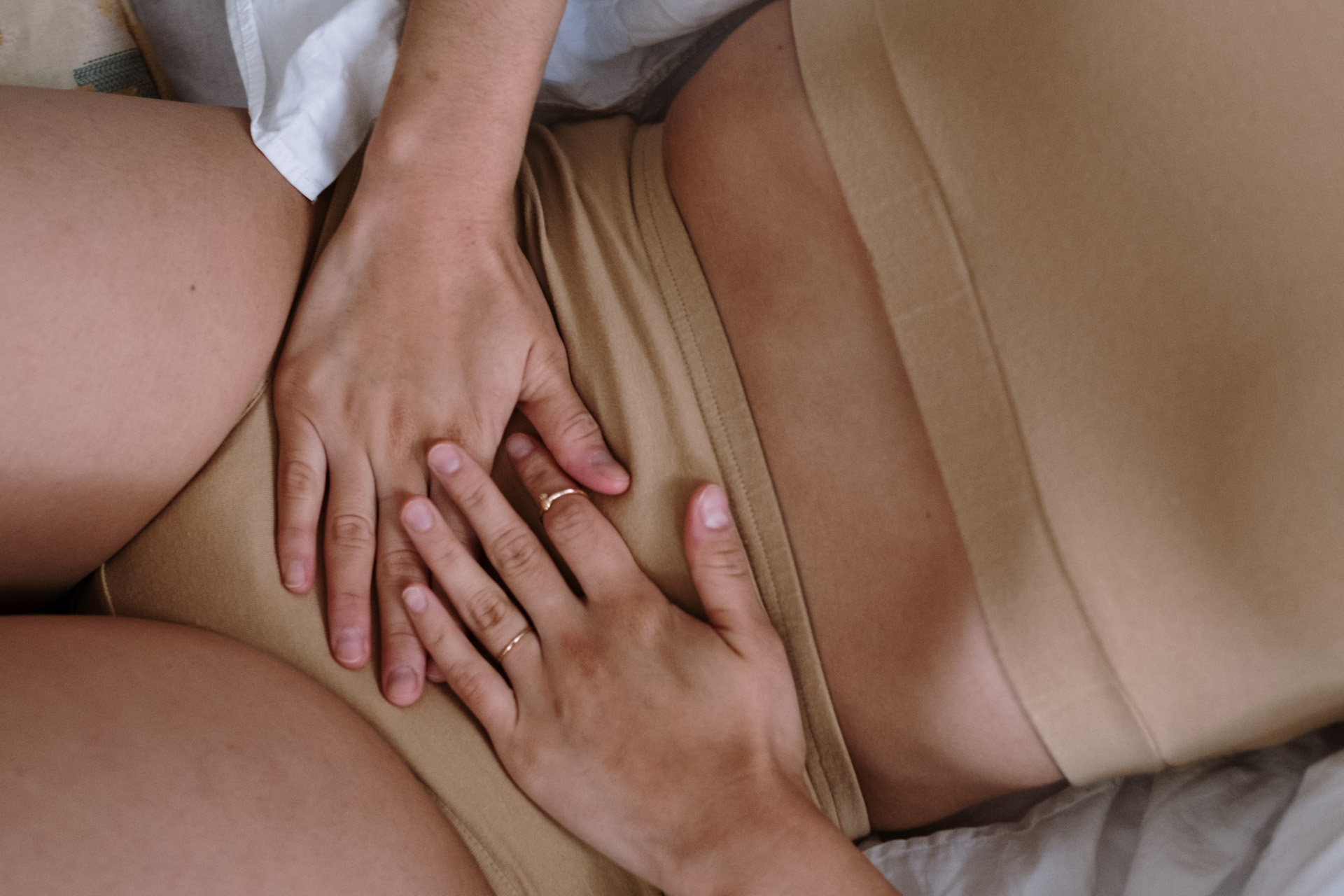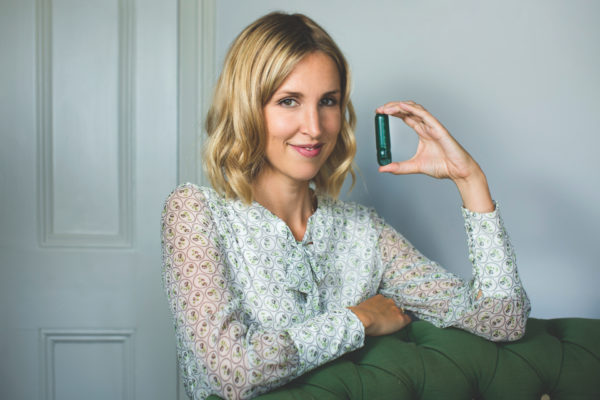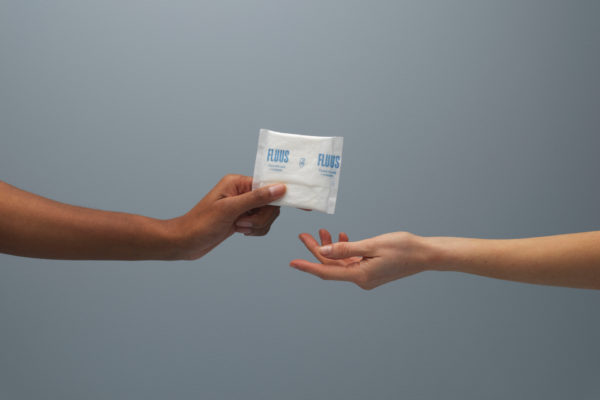What Is A TENS Machine? And Is It Worth Getting One?
By
2 years ago
Could this be the answer to your period pain prayers?

March was endometriosis awareness month, drawing attention to the chronically underdiagnosed inflammatory condition. Affecting approximately one in 10 people’s monthly periods – as well as commonly affecting day-to-day life throughout the month – endometriosis is extremely painful, and can cause infertility and subfertility. Whether you have an endometriosis diagnosis, suspect you might have it, or you experience period pain for any other reason, today we explore one pain relief option that you may have seen popping up on Instagram: the TENS machine. But what is a TENS machine? And is it worth getting one? C&TH investigates…
In this article:
- What is period pain?
- Why does it happen?
- Why do some people experience it while others don’t?
- What is a TENS machine?
- Spotlight on: Myoovi
- What are the benefits of a TENS machine?
- Is it worth getting one?
What Is A TENS Machine? And Is It Worth Getting One?
But first, let’s clear up the basics…
What Is Period Pain?
‘Menstrual cramps, also known as dysmenorrhea, are caused by contractions of the uterus,’ says Valentina Milanova, founder of Daye. ‘These contractions are caused by the release of prostaglandins, hormone-like substances that are produced by the lining of the uterus. During menstruation, the uterus contracts to help shed the lining of the uterus that is not needed.’
If you experience period pain, you’re definitely not alone. ‘Dysmenorrhea, or period cramps as it’s more commonly known, is a very normal part of the menstrual cycle,’ reassures Dr Adiele Hoffman, GP and Medical Adviser at Flo. ‘It’s estimated that more than half of us experience period pain for one or two days each month.’
View this post on Instagram
As one of these recurrent sufferers, there’s a recurring question on my lips when my monthly curse arrives: Why me?! Time to consult the experts.
Why Does It Happen?
While our bodies shed the lining of the uterus, ‘the contractions reduce blood flow to the uterus and cause a lack of oxygen which results in pain,’ explains Dr Hoffman. But this is only one type of period pain, known as primary dysmenorrhea, which means the pain is ‘not caused by any underlying gynaecological condition,’ says Dr Hoffman. ‘Secondary dysmenorrhea, however, is caused by other gynecologic conditions such as endometriosis, adenomyosis, or fibroids.
‘Endometriosis – the most common of the three – is a painful condition where tissue similar to uterine lining grows in other parts of the body such as the tubes and ovaries,’ says Dr Hoffman. ‘This tissue also breaks down and bleeds as hormones change, but it can sometimes become trapped, and, in some cases, painful scar tissue can form.’
View this post on Instagram
Why Do Some People Experience Pain While Others Don’t?
It all depends on those pesky prostaglandins, explains Valentina at Daye. ‘Prostaglandins can cause the uterus to contract more strongly, leading to more severe menstrual cramps. Higher levels of prostaglandins can also cause other symptoms, such as nausea, diarrhoea, and headaches. Other factors that may contribute to menstrual cramps include hormonal imbalances, endometriosis, uterine fibroids, pelvic inflammatory disease, and adenomyosis.’
We ease these pains with a plethora of products, from paracetamol to NSAIDs (aspirin and ibuprofen), herbal teas to heat pads. But sometimes, it’s just not enough. I’ve struggled with debilitating period cramps since that fateful day of my first period when I was 11 years old. From being told I would grow out of it to being told it’s ‘not that bad’, to having blood tests, ultrasounds and MRI scans, the question mark over my agonising cramps still looms – as it does with so many people who grapple with this monthly pain.
That’s why, when cute pink TENS devices started popping up on my Instagram feed, I thanked the algorithm gods for sending something useful my way. Could this be the answer to my pained prayers? Perhaps…
What Is A TENS Machine?
‘TENS device stands for Transcutaneous Electrical Nerve Stimulation,’ Valentina at DAYE tells me. ‘It is a small battery-operated device that uses low-frequency electrical impulses to provide pain relief. The device is typically attached to the skin using adhesive pads, and the electrical impulses stimulate the nerves to reduce the sensation of pain.’ Sounds ideal.
I’m sold. Venturing back to Instagram, in but a few swipes, it reappears: Myoovi, the ‘drug free, instant period pain device’ heavily investing in its social media promotions in 2023…
View this post on Instagram
Myoovi: TENS Machine Review
Myoovi is a small and lightweight circular device that fits in the palm of your hand. Available in three skin tone shades, it attaches to adhesive butterfly-shaped pads (available in the same three colourways) with what can only be described as stud buttons. With only a power, ‘+’ and ‘-’ button controlling the whole thing, I’m slightly sceptical. Surely this won’t be as great as the hundreds of gushing reviews make out? It’s hard to believe.
Unconvinced, on the first day of my period, I take my usual painkillers, easing the familiar pain into a dull ache. Let’s give it a go, I think. I click the Myoovi device into place on one of the two butterfly pads in the pack, carefully peel it off its plastic film and reluctantly (it’s freezing cold) smooth it onto my lower abdomen. Power up; the subtlest of buzzes in my abdomen. Click click click on the ‘+’ button, and woah – that kind of hurts. Back down on the ‘-’ button. OK. I wait.
I carry on with my day. Five minutes later I notice… nothing. And by nothing I mean no pain. It sounds dramatic. In all honesty, I can’t tell if the pain is really gone, or my body is distracted by the buzz that it just forgets to remind me I’m still in pain. ‘A TENS device works by stimulating the nerves, which can block pain signals from reaching the brain,’ Valentine tells me; it sounds like this is what is happening to me. ‘The electrical impulses can also stimulate the production of endorphins (feel-good hormones), which are natural painkillers produced by the body. Additionally, the TENS device can help to improve blood flow and reduce muscle tension, which can further alleviate pain.’
Over the next few days, Myoovi and I are inseparable. (Literally – the butterfly pad is a bit of a pain to get off.) When I feel the slightest twinge of pain, back on it goes. Sometimes I don’t remove the pad between bursts of use, leaving it glued to my abdomen to avoid peeling it off only to stick it back on again.
What Are The Benefits Of Using A TENS Machine?
‘The benefits of using a TENS device include providing a non-invasive and drug-free way to manage pain,’ says Valentina. ‘It can be used for a variety of pain conditions, including chronic pain, acute pain, and postoperative pain. It is also relatively safe and can be used at home without the need for a prescription.’
For me, this combination approach is crucial to the merits of the Myoovi TENS machine: I can use it in addition to my usual painkillers (and I’m not at all convinced by Myoovi’s assertion that their device could or should replace pain killers). ‘TENS machines can be considered as a treatment for period pain in addition to medication like NSAIDs or hormonal contraception,’ Dr Hoffman agrees, referring to recommendations by the National Institute of Clinical Excellence (NICE), based on the evidence to date. ‘It has the advantage of being safe for most people and having few side effects, although some people find the vibrations uncomfortable. If it works for you, it may mean you can reduce the amount of painkillers you need. It’s worth bearing in mind, though, that not everyone can use them – for example they’re not safe in early pregnancy or if you have a pacemaker.’
Is A TENS Machine Worth It?
It’s a resounding yes from me, based on my experience with Myoovi. The pain relief, for me, is immediate. And, while it does feel slightly odd to have a round shape jutting out of the front of my trousers, wearing looser clothes – like a dress, or higher waisted trousers – makes the small device relatively discreet.
The main drawback are the butterfly pads: both their replacement cost (£15 for two pads) and their disposal. While they do last a decent length of time – 20 uses, according to Myoovi, which is around two periods for me – this could be a dealbreaker for some, especially if you prefer zero-waste periods. That said, if you really struggle with cramps, I think it’s worth a shot.
Overall, I would recommend searching around. ‘They vary a lot in price and it’s worth bearing in mind that more expensive machines are not necessarily any better,’ Dr Hoffman says. ‘Nowadays, there are all sorts of high-tech versions of the trusty old TENS on the market – some of them at a significant cost markup. You can buy them in pharmacies, and some physiotherapists or pain clinics loan them out for you to try.’
Myoovi, in particular, retails at £120 with a 60 day money back guarantee if it doesn’t work for you. But this price is almost always reduced. Right now, for example, the machine is priced at £69.99. When I purchased mine, I used a discount code I found in an Instagram advert in addition to the reduced price. Plus, you can get 5 percent off by signing up to their newsletter. In short, it’s not worth £120, especially when no one else is paying this amount. With the discounts moving Myoovi into the realm of decent rather than extortionate, though, and with the 60-day money back guarantee, it’s definitely worth trying it. myoovi.co.uk
Other brands to consider:
- Ovira
- Beurer
- Or explore options in high street retailers such as Argos, Boots, and Holland & Barrett
Featured image courtesy of Pexels.









